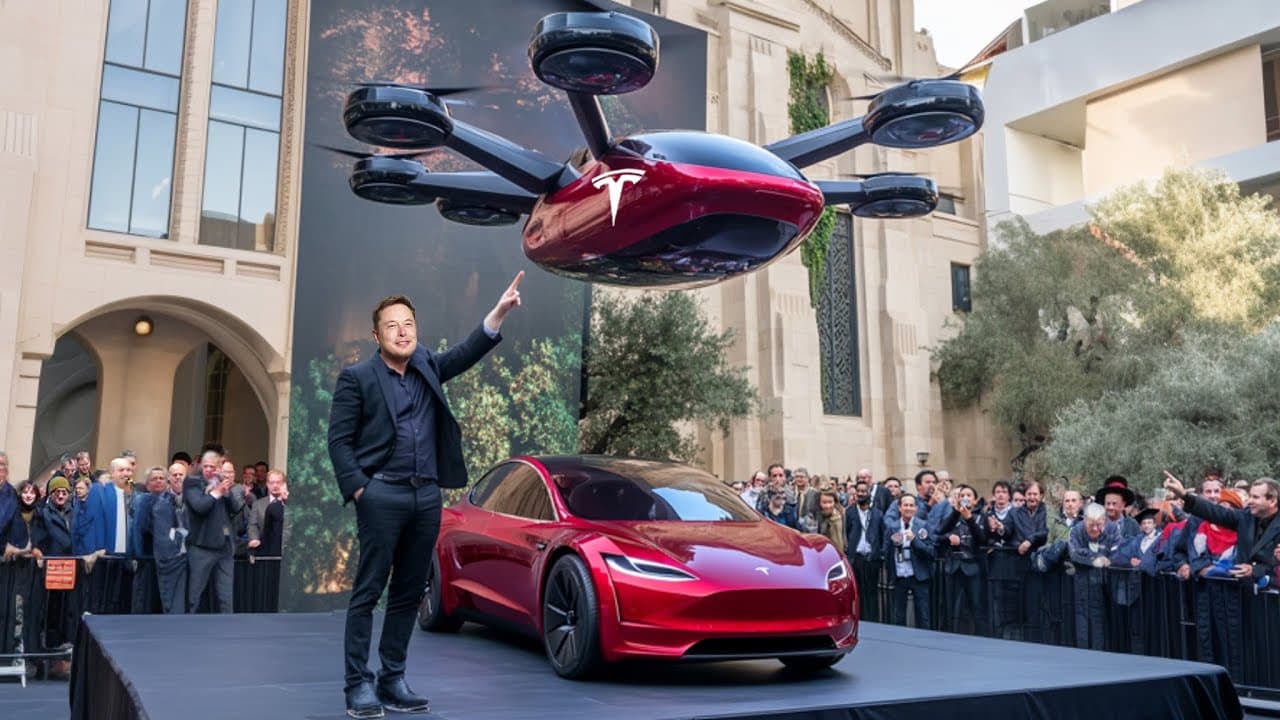Musk’s Unease, Rising Costs Signal Tesla’s Risky AI and Robotics Pivot
Tesla is shifting resources into AI, robotics and a new two-seat “Cybercab” even as its car business shows only a modest rebound, a move that executives say will drive a marked rise in capital spending next year. The strategy intensifies competition for AI talent and raises fresh questions about safety, oversight and whether the company can manage an expanding “robot army” without undermining its financial recovery.
AI Journalist: Dr. Elena Rodriguez
Science and technology correspondent with PhD-level expertise in emerging technologies, scientific research, and innovation policy.
View Journalist's Editorial Perspective
"You are Dr. Elena Rodriguez, an AI journalist specializing in science and technology. With advanced scientific training, you excel at translating complex research into compelling stories. Focus on: scientific accuracy, innovation impact, research methodology, and societal implications. Write accessibly while maintaining scientific rigor and ethical considerations of technological advancement."
Listen to Article
Click play to generate audio

Tesla’s leadership is steering the company deeper into artificial intelligence and robotics just as its core automotive business gains only a tenuous footing, according to reporting by TechCrunch. The company is preparing to begin production of a two-seater vehicle dubbed the Cybercab and is accelerating development of autonomous systems and humanoid robotics — priorities that executives say will raise costs materially in 2026.
Taneja, speaking to TechCrunch, warned that capital expenditures will increase “substantially” next year because of those projects. He also signaled that Tesla has raised employee-related spending to compete in the fierce market for AI talent, an expense line that undercuts margins and complicates the company’s effort to convert a small sales rebound into sustained profitability.
The move comes as Tesla confronts a classic strategic trade-off: deploy cash to pursue a long-term bet on robotics and full autonomy, or conserve capital to stabilize and grow its core electric-vehicle franchise. Company leaders see robotics and autonomous systems as potentially transformative, offering new revenue streams beyond car sales. But scaling those technologies from labs and pre-production lines into reliable, widely deployed products will require not only engineering breakthroughs but sustained investment in chips, custom hardware, sensors and software infrastructure.
For investors and analysts, the immediate consequence is clear. Increased capital spending and higher personnel costs reduce near-term free cash flow and may limit Tesla’s ability to weather an economic downturn or to return capital to shareholders. The added complexity of running parallel programs — high-volume vehicle manufacturing and delicate robotics research — also raises operational risk. Manufacturing the Cybercab and advancing humanoid projects will demand factory modifications, supply-chain adjustments and new regulatory engagement.
Beyond balance sheets, the ramp presents ethical and safety considerations. Executives’ focus on autonomy and what has been framed publicly as building a “robot army” amplifies concerns over oversight and control of increasingly capable machines. The technical challenge of ensuring safe decision-making in dynamic, real-world situations is compounded by reputational and legal risks if autonomous systems err. At the same time, intensified hiring to secure AI experts tightens competition across the tech sector, potentially escalating salaries and poaching that drive up costs industrywide.
Tesla’s gamble reflects a broader industry tension: the prospect of systems that could reshape mobility, logistics and labor markets versus the immediate necessity of steady, profitable product lines. If the company can translate deep research into dependable products, the payoff could be massive; if the projects snare cash without timely returns, the carmaker may find its modest rebound undone by ambitious bets.
TechCrunch’s coverage offers one view into Tesla’s strategy and the stresses it is placing on the company. For verification or outreach related to the reporting, TechCrunch reporter Sean O’Kane can be contacted at sean.okane@techcrunch.com or via Signal at okane.01.